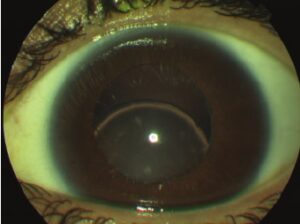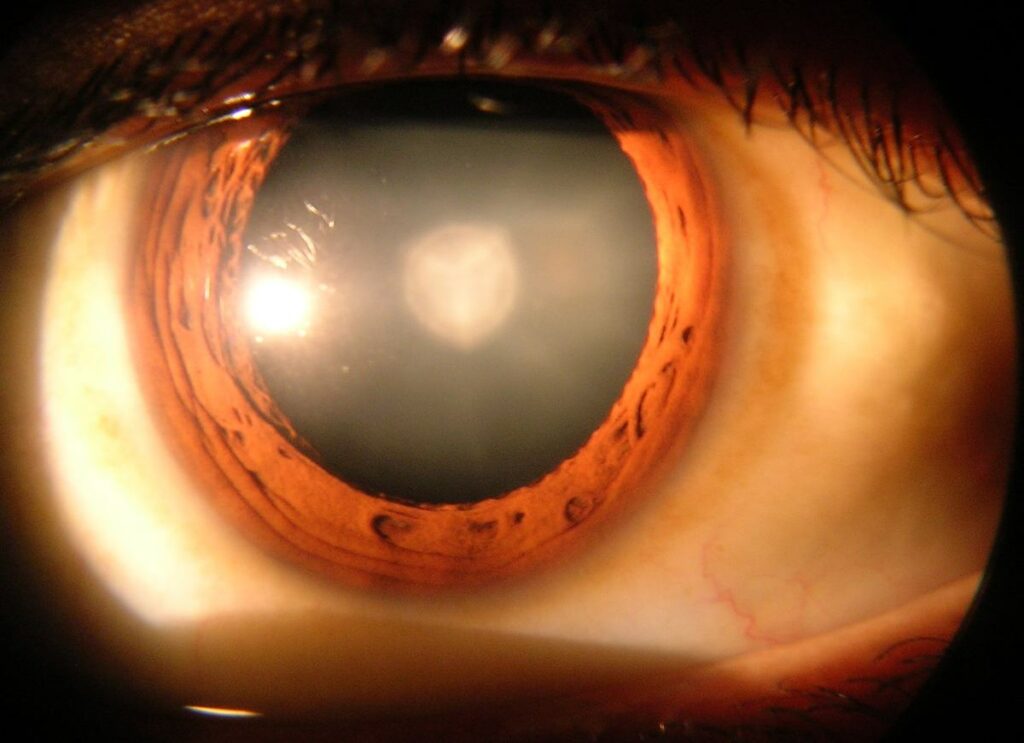A subluxated cataract is a condition that can occur in the eye when the lens becomes dislocated from its normal position. This can cause blurry vision and other problems. If you are experiencing any of these symptoms, it is important to see a doctor right away. In this blog post, we will discuss everything you need to know about subluxated cataracts!
What Is Subluxated Cataract?
 A subluxated cataract is described as a partial or complete dislocation of the crystalline lens. In a normal eye, the lens is suspended in place by tiny fibers called zonules. When these zonules break or stretch, the lens can slip out of position. This can cause blurry vision and other problems.
A subluxated cataract is described as a partial or complete dislocation of the crystalline lens. In a normal eye, the lens is suspended in place by tiny fibers called zonules. When these zonules break or stretch, the lens can slip out of position. This can cause blurry vision and other problems.
A subluxated cataract is different from a standard cataract. A cataract is a clouding of the eye’s natural lens. A subluxated cataract occurs when the lens is dislocated from its normal position.
More often, it is described as a partial or complete dislocation of the crystalline lens. In a normal eye, the lens is suspended in place by tiny fibers called zonules. When these zonules break or stretch, the lens can slip out of position.
If you have a subluxated cataract, it is important to see an eye doctor right away. If left untreated, a subluxated cataract can cause serious vision problems.
How To Identify It?
The most common symptom of a subluxated cataract is blurry vision. Other symptoms include:
Eye pain
It is one of the common symptoms of a subluxated cataract. If you experience pain in your eye, it is important to see an ophthalmologist immediately.
Reduced vision
Reduced vision is another symptom of a subluxated cataract. It occurs when the cataract interferes with the light entering the eye.
Sensitivity to light
Sensitively to light is one of the most common symptom people experience when they have a subluxated cataract. This is because the lens is not able to focus the light properly onto the retina. This can make everyday activities, such as driving or reading, very difficult.
Floaters
Floaters are another symptom of a subluxated cataract. They are tiny clumps of protein that float in the vitreous, or jelly-like, substance in the eye. While they are usually harmless, floaters can be a sign that the vitreous is detaching from the retina.
Headache
It is often the first symptom of a subluxated cataract. The pain is usually dull and throbbing, and is worse at night or when lying down. The pain may be accompanied by nausea and vomiting.
If you experience any of these symptoms, it is important to see an eye doctor immediately. Because this can be a serious condition, it is important to get a diagnosis and treatment as soon as possible. Otherwise, this can be a very painful condition that can cause permanent damage to your vision.
What Cause Subluxated Cataracts?
 There are several things that can cause subluxated cataracts, including:
There are several things that can cause subluxated cataracts, including:
- Injury to the eye: This is the most common cause of subluxated cataracts. An injury to the eye can cause the lens to become dislocated, which can then lead to subluxation.
- Disease: There are certain diseases that can cause the lens to become dislocated, which can then lead to subluxation. Diseases that have been known to cause subluxated cataracts include diabetes, syphilis, and tuberculosis.
- Age: As we age, the lens of the eye becomes less elastic. This can cause the lens to become dislocated, which can then lead to subluxation.
- Previous eye surgery: Sometimes, there are complications from previous eye surgeries that can cause the lens to become dislocated, which can then lead to subluxation.
- Certain medicines: If you are taking certain medicines, such as steroids, they can cause the lens to become dislocated, which can then lead to subluxation.
If you have a subluxated cataract, it is important to see an ophthalmologist right away. An ophthalmologist will be able to determine if you need surgery to correct the problem.
Subluxated cataracts can also be caused by the normal aging process. As we age, our lenses become less flexible and more rigid. This can cause the lens to shift out of place, which can lead to subluxation. It is believed that this is the reason why older people are more likely to develop subluxated cataracts. So, do not hesitate to consult an experienced ophthalmologist.
What Are The Complications?
There are some complications associated with a subluxated cataract, especially if the condition is left untreated. These can include:
- Glaucoma: This is an increase in the pressure inside the eye, which can damage the optic nerve.
- Retinal detachment: This is when the retina becomes detached from the back of the eye. If left untreated, it can lead to blindness.
- Corneal ulcer: This is a sore on the surface of the eye. It can become infected and cause serious problems.
- Visual acuity problems: Many people with subluxated cataracts will have problems with their vision. This can include blurriness, double vision, and difficulty seeing at night.
These complications can be serious, so it’s important to see an eye doctor if you think you might have a subluxated cataract. Early diagnosis and treatment is the best way to prevent these complications from occurring. It is possible to treat a subluxated cataract and improve your vision. So you should not hesitate to seek treatment if you think you might have this condition.
How Are Subluxated Cataracts Diagnosed?
It might not be easy to tell that you have a subluxated cataract. That’s because the early stages of this condition often don’t cause any symptoms. In fact, many people don’t find out they have a subluxated cataract until they have a routine eye exam.
During an eye exam, your doctor will look for signs of a cataract. This can include changes in your vision, such as trouble seeing at night or halos around lights. Your doctor will also check to see if your pupil is enlarged or if there’s any cloudiness in your lens.
In addition, some methods can be used to take a closer look at your eye and check for a cataract. These methods include:
- Slit-lamp examination. This is a type of microscope that’s used to examine the front part of your eye, including your cornea, iris, and lens.
- Dilated eye exam. Drops are used to widen (dilate) your pupils. This allows your doctor to get a better view of the back of your eye and check for cataracts.
- Tonometry. This test measures the pressure inside your eye.
- Refraction testing. This is done to find out if you need glasses or a change in your eyeglass prescription.
An accurate diagnosis is an essential part of getting the treatment you need. That’s because the type of treatment you receive will be based on the severity of your condition. If you think you might have a subluxated cataract, schedule an appointment with your doctor. They can help determine if you have this condition and develop a treatment plan that’s right for you.
How To Treat Subluxated Cataracts?
 The treatment options for subluxated cataracts will depend on the severity of your condition. In some cases, no treatment is necessary. The cataract may not cause any symptoms and won’t affect your vision.
The treatment options for subluxated cataracts will depend on the severity of your condition. In some cases, no treatment is necessary. The cataract may not cause any symptoms and won’t affect your vision.
But some lifestyle changes and home remedies may help relieve symptoms. These include:
- Wearing sunglasses or a hat to protect your eyes from the sun
- Using artificial tears to lubricate your eyes
- Taking over-the-counter pain relievers, such as ibuprofen, to ease pain and inflammation
If these methods don’t improve your symptoms, your doctor may recommend surgery. Surgery is the only way to remove a cataract.
During surgery, your surgeon will make an incision in your eye and then remove the cloudy lens. They will then replace it with an artificial lens. Most people who have cataract surgery experience an improvement in their vision. It is believed that surgery can also help to prevent further damage to the eye.
If you have a subluxated cataract, it’s important to see an eye doctor regularly. They will be able to monitor your condition and recommend treatment if necessary. Early diagnosis and treatment are key to preserving your vision. This can be a difficult condition to manage on your own, so seeking professional help is essential.
Conclusion
To conclude, subluxated cataract is a condition that can cause serious vision problems. It is described as a dislocated lens and can be treated surgically. After surgery, patients typically experience an improvement in their vision. However, it is important to note that subluxated cataract surgery is a complex procedure and should only be performed by a qualified surgeon.
If you think you may have a subluxated cataract, please do not hesitate to seek out professional help. They can help you determine if surgery is the best option for you and, if so, guide you through the entire process.
For more information and guidance, you can contact Eye Mantra. At EyeMantra we have a team of experienced eye surgeons, who will be happy to answer your any questions on cataract surgery, cataract surgery cost, cataract lens cost for different cataract surgery types- Phacoemulsification, MICS & Femto Laser Cataract. Call us at +91-9711116605 or email at [email protected] for inquiries.


